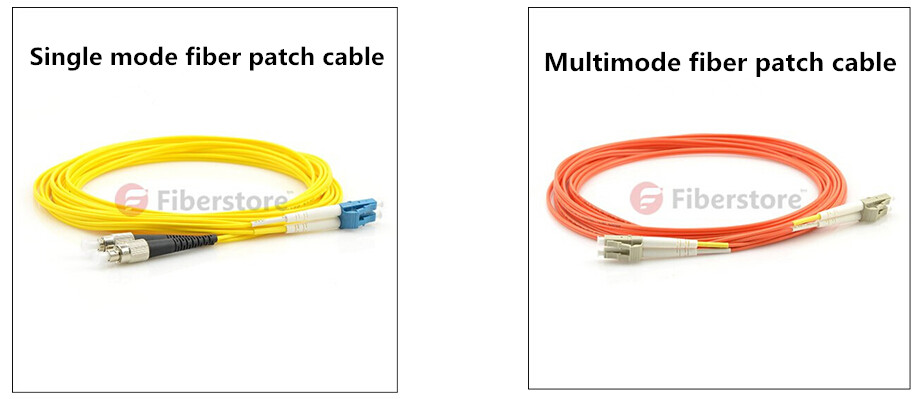Guide to Fiber Optic Patch Cable
Fiber optic patch cable, also known as fiber optic jumper or fiber optic patch cord, is an optical cable capped at both end with connectors and used to connect one telecommunication equipment to another. The optical connectors on the end of these patch cords shall be compatible with the connectors furnished on the optical device transmit and receive cards. Fiber optic patch cords are designed to interconnect or cross connect fiber networks within structured cabling systems. A fiber optic patch cord is constructed from a core with a high refractive index, surrounded by a coating with a low refractive index that is surrounded by a protective jacket. According to the optical fiber used, fiber optic patch cable can be divided into two types: single mode fiber patch cable and multimode fiber patch cable.
Single mode fiber patch cable is generally yellow, with a blue connector. Single mode fiber patch cable has a small diametral core of 8 to 10 microns, which allows only one mode of light to propagate, that is to say, light travels toward the center of the core in a single wavelength, which lowers the number of light reflections created as the light passes through the core, thus improving the ability for the signal to travel fast over long distance. Therefore, single mode patch cable is popular in long-distance situations spanning hundreds of kilometers such as those required in long-haul telephony and cable TV applications.
Multimode fiber patch cable is generally orange or gray, with a cream or black connector. It uses 62.5/125 micron or 50/125 micron bulk multimode fiber terminated with multimode fiber optic connectors at both ends. Multimode fiber patch cable which supports more than one mode of light to propagate is mostly used for communication over short distances, such as within a building or on a campus. Multimode fiber patch cable is popular in LANs because it can be powered by low-cost LEDs. Typical multimode links have data rates of 10 Mbit/s to 10 Gbit/s over link lengths of up to 600 meters.

The main difference between single mode fiber patch cable and multimode fiber patch cable is that the latter has much larger core diameter than the former. Because of the large core, multimode fiber patch cable supports more than one propagation mode; hence it is limited by modal dispersion, while single-mode fiber patch cable is often used in high-precision scientific research because the allowance of only one propagation mode of the light makes the light more easily to focus properly. Due to the modal dispersion, multimode fiber patch cable has higher pulse spreading rates but lower transmission capacity than single mode fiber patch cable. Moreover, single mode fiber patch cable has lower power loss than multimode fiber patch cable, which means light can travel longer distances through the former than through the latter. However, single-mode fiber patch cable used in telecommunications operate at wavelengths of 1310 or 1550 nm and require more expensive laser sources, making multimode fiber patch cable more cost effective.
All in all, single mode fiber patch cable and multimode fiber patch cable have both benefits and limits. Whether to choose a single mode or multimode fiber patch cable depends on many factors. One of the most important factors to consider is the distance requirement. Within a data center, it's typical to use multimode fiber patch cable which can get you 300 to 400 meters. If you have very long runs or are connecting over longer distance, single mode fiber patch cable can get you 10km, 40km, 80km, or even further. You just need to use the appropriate fiber patch cable for the distance required, and the cost changes accordingly.